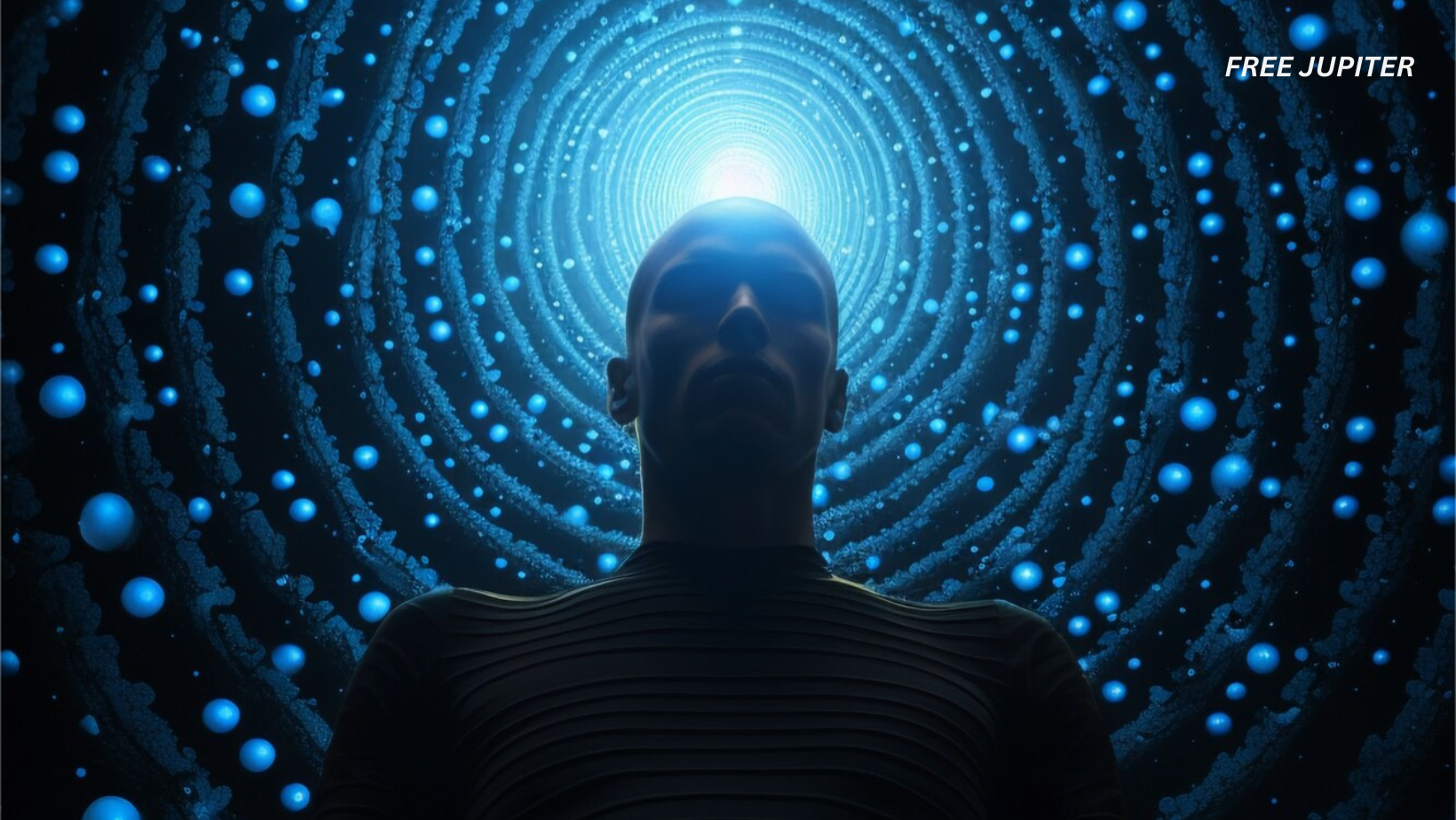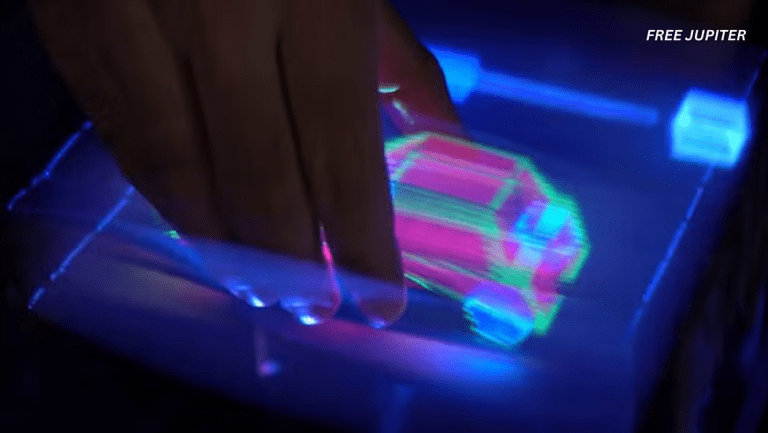A groundbreaking idea has recently been proposed, offering a fresh and intriguing perspective on the enigma of human consciousness. This theory, which ventures far beyond traditional neuroscience, hints at the possibility that awareness may stem not solely from brain function, but from interactions with unseen dimensions beyond our physical perception.
It has been suggested by Dr. Michael Pravica, a physics professor at the University of Nevada, Las Vegas, that human consciousness could, at certain heightened moments, tap into these invisible layers of reality. These dimensions, according to his theory, lie beyond the familiar four—length, width, height, and time—that shape our everyday experience.
While deeply controversial, this bold hypothesis draws from the concept of hyperdimensionality, which postulates that the universe may be woven with far more dimensions than those currently observable. The idea is not entirely new within theoretical physics circles but has rarely been connected so directly with the phenomenon of consciousness.
Dr. Pravica argues that during activities such as creating art, delving into scientific research, engaging with philosophical ideas, or entering dream states, the human mind may synchronize with higher realms of existence. In these instances, it is believed that consciousness could be elevated, enabling access to insights or inspiration from dimensions that cannot be detected by our senses or instruments.
To illustrate this concept, an analogy has often been employed. Imagine a two-dimensional being confined to a flat, paper-like world. Should a three-dimensional sphere pass through that plane, the 2D being would perceive it merely as a series of expanding and contracting circles, never realizing the object’s true form. Similarly, human beings may be unaware of the higher-dimensional nature of reality, restricted by their limited perspective.
In this context, humans are likened to those 2D figures—capable of sensing only what lies within their immediate dimensional framework. Anything outside that scope would remain elusive, not because it doesn’t exist, but because it lies outside the perceptual boundaries of human biology and physics.
This forms the crux of hyperdimensional theory—the belief that reality is far richer and more complex than what can currently be measured or observed. These extra dimensions, though hidden, could be influencing the physical universe in fundamental ways, possibly even shaping the essence of human thought.
String theory, a prominent and widely respected framework within physics, supports a similar view. It suggests that the smallest known elements of the universe are not particles, but one-dimensional “strings” that vibrate at different frequencies. These vibrations are believed to occur in dimensions beyond the four we know, giving rise to all forms of matter and energy in the observable universe.
Dr. Pravica emphasizes that string theory, in essence, is a study of hyperdimensionality. It offers a lens through which the structure of the universe at its most microscopic level can be examined. Yet, despite these theoretical advancements, no direct observational proof of these hidden dimensions has yet been found.
Still, the possibility has been raised that consciousness itself may serve as a bridge—one not built of matter, but of awareness—capable of interacting with these imperceptible dimensions. The mind, in its most active or creative states, may be accessing realms that go unnoticed by current technology.
The claim has stirred debate, especially because it merges scientific inquiry with spiritual speculation. As a devout Orthodox Christian and a physicist with a Harvard doctorate, Dr. Pravica sees no conflict between faith and science. For him, the concept of hyperdimensionality is a potential reconciliation between the empirical world and spiritual belief.
As part of this integration, he has floated a provocative notion: that figures such as Jesus Christ could be hyperdimensional beings. Scriptural events—such as Jesus’ ascension into heaven—are interpreted not as mystical allegory, but as phenomena that might be explained by movement between dimensional planes.
This viewpoint has not gone unchallenged. Critics argue that relying on such interpretations risks turning science into a vessel for unverified theological assertions. Stephen Holler, an associate professor of physics at Fordham University, has been among those voicing skepticism. He describes Dr. Pravica’s perspective as reminiscent of the “God of the gaps” approach—where gaps in scientific understanding are filled with divine explanations, rather than left open for continued inquiry.
Such reasoning, Holler contends, may stifle progress by discouraging the honest acknowledgment of what remains unknown. In his view, good science thrives on curiosity, humility, and a willingness to say, “I don’t know,” rather than rushing to fill unanswered questions with speculative beliefs.
There is also the challenge of evidence. While higher dimensions can be modeled mathematically, this does not constitute proof of their existence. The equations are compelling, but they remain abstract. Without tangible verification, it is difficult to affirm whether these dimensions interact with human consciousness in any measurable way.
Technologically, the tools currently available to physicists fall short of penetrating these elusive realms. Even the most advanced facility on Earth—the Large Hadron Collider (LHC) at CERN—is unable to detect the high-dimensional strings posited by quantum theory. The LHC, capable of smashing particles at near-light speed, allows scientists to peer deep into the building blocks of matter. Yet, even its immense power has proven insufficient to reveal direct evidence of extra dimensions.
\To reach that level of detection, an even more powerful particle accelerator would be required—one that has not yet been constructed. It is for this reason that some physicists remain cautious, suggesting that talk of hyperdimensional consciousness borders too closely on science fiction.
Nevertheless, Dr. Pravica remains undeterred. He believes that, with time, future generations may possess the means to explore what is currently beyond reach. In fact, he holds hope that such advancements could arrive during his children’s lifetime.
Until then, his research and reflections continue to challenge conventional thinking. For Dr. Pravica, the pursuit of this knowledge is not simply academic—it’s deeply personal and philosophical.
“Otherwise, what’s the point?” he mused in an interview. “Why study? Why live?”
Such questions highlight the emotional depth behind his work. It isn’t just about equations or theories; it’s about grappling with the profound mystery of what it means to be conscious, to be human, and to exist in a universe that may be far more complex than once imagined.
While mainstream science remains cautious, the allure of such ideas endures. The concept that consciousness might extend beyond the brain, that it could resonate with higher planes of existence, taps into a long-standing human curiosity. For centuries, philosophers, mystics, and scientists alike have pondered the origin of consciousness, searching for explanations that can fully capture its depth and nuance.
Currently, several leading theories attempt to explain it in neurological terms. One such framework, known as Integrated Information Theory (IIT), suggests that consciousness arises from the amount and quality of information being shared across the brain’s networks. The more integrated this information becomes, the more aware a being is considered to be.
Another perspective, rooted in neuroscience, argues that top-down signaling in the brain plays a key role. This mechanism involves higher cognitive areas sending signals to lower regions, essentially shaping perception based on expectations, memories, or context.
But while these models offer valuable insights, none have yet provided a comprehensive account of why consciousness feels the way it does—or why it exists at all. For many, this mystery remains one of the most profound puzzles in science.
It is precisely this gap in understanding that Dr. Pravica seeks to address, even if the answers he proposes are speculative. His approach may not satisfy everyone, especially those grounded solely in empiricism, but it undeniably pushes the boundaries of how consciousness might be viewed.
Whether or not his ideas will be validated by future discoveries remains to be seen. For now, they continue to spark conversation, debate, and wonder.
At the intersection of physics, spirituality, and human cognition lies a question that may define the future of science: What if the mind is not merely a byproduct of the brain—but a gateway to something more?










